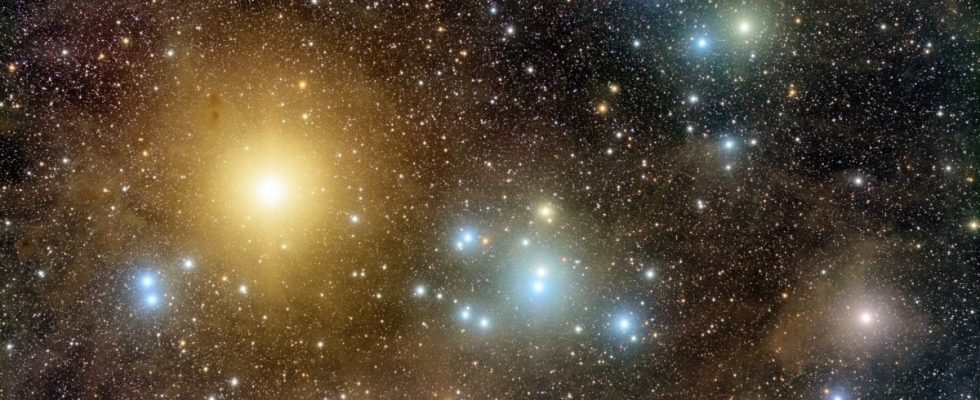A European research group has found evidence of several stellar black holes in the Hyades star cluster, just 150 light-years away. They would be by far the closest ones that we know of. As Stefano Torniamenti’s group from the University of Padua in Italy explains, the work involved simulating the movements of all the stars in the star cluster and comparing the results with the observations. It became clear that the mass and size of the Hyades could only be reconciled with the simulations if two to three black holes existed in their center – or had existed until recently.
Advertisement
Ten times closer than the previous record holder
If the theory is confirmed, the black holes in the Hyades would be by far the closest to us. The previous record holder, an object called BH1, was discovered just a year ago and, at over 1,500 light-years, is more than ten times as far away from us. The extremely precise data from ESA’s Gaia space telescope were used for both detections. This was started in 2013 and uses parallax measurements to determine the position of countless stars and galaxies on their path around the sun with ever-increasing precision.
Open star clusters are loosely connected groups of hundreds of stars that share certain properties such as age and chemical composition, the research team explains. The Hyades (also “rain star” or “the little pigs”) are the closest such structure to the solar system, which is why they have long been of particular interest to research. While the simulation of the star movements there has now shown that they can best be explained by the presence of several black holes, it is also possible that black holes that existed there were ejected 150 million years ago. Even then, the objects would not pose a threat to Earth.
Overall, this suggests that the closest black holes to us are located in or near the Hyades cluster, writes the team. Now in the Monthly Notices of the Royal Astronomical Society published work This not only provides a crucial clue as to where the search for particularly close black holes might be particularly worthwhile. The work also helps to understand the influence of black holes on the formation and evolution of open star clusters, explains astrophysicist Mark Gieles from the University of Barcelona. It also provides an indication of how these objects are distributed in the Milky Way.
(mho)

